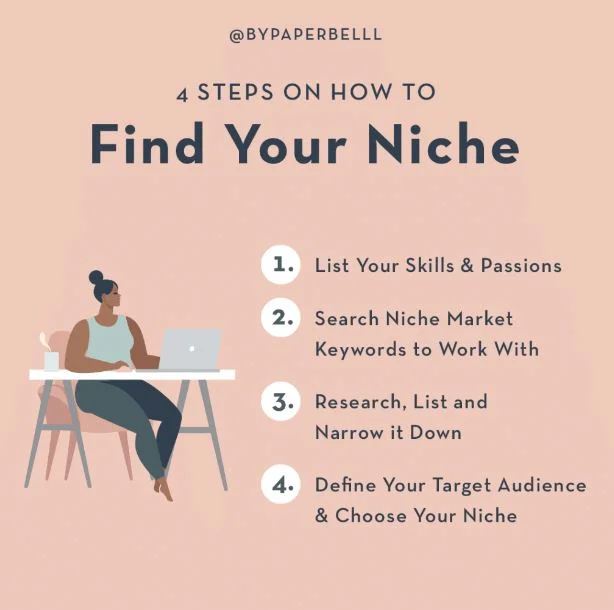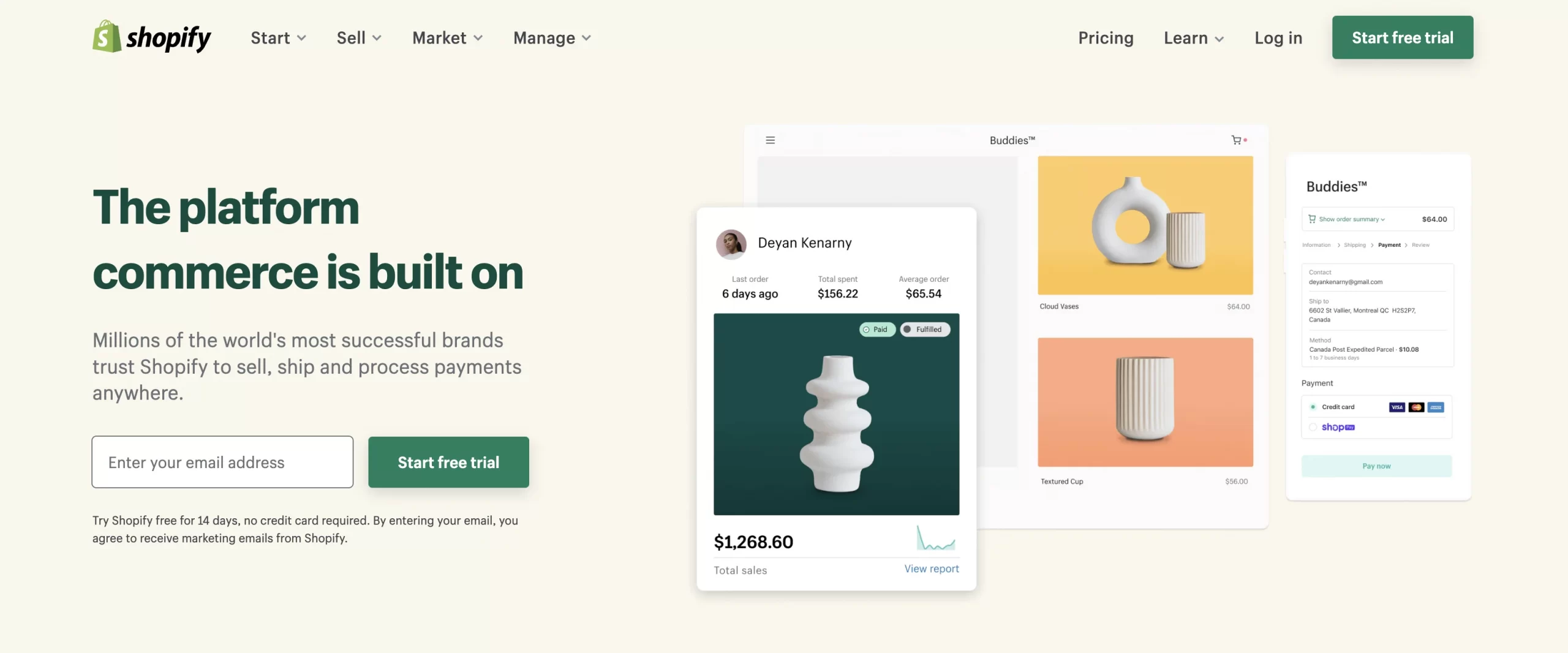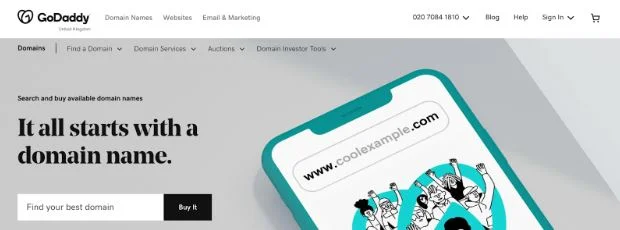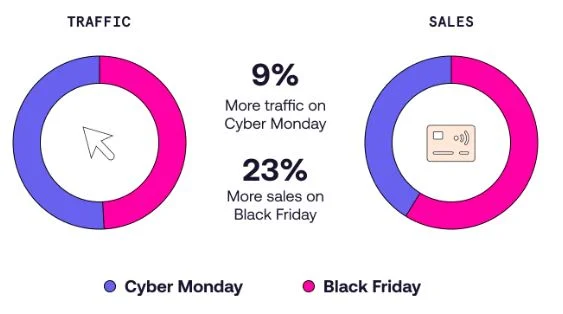Overview
An online boutique is a great way to sell unique items and reach a wider audience than a brick-and-mortar store. With this type of online store, you have the potential to reach customers all over the world. With a bit of planning and effort, you can have a thriving online boutique business in no time.
However, knowing how to start an online boutique and the steps to follow to get the business rolling might seem like a long process task, with many factors to consider. In this guide, we will guide you through the process you need to follow to get started on your very own online boutique.
Let’s dive deep into this topic!
13 Steps to Start an Online Boutique
These are the steps to follow when starting an online boutique business.
#1 Choose your niche
As with any other online business, the first step is to choose your niche. When it comes to an online boutique, you’ll want to start from an area you’re passionate about. Once you’ve decided on your niche, you can narrow down what type of products you’d like to sell in your store.

The process of choosing your niche is crucial as it will be the foundation of your business.
Here are some specific questions you can ask yourself when trying to identify the niche for your online boutique:
- What do you love?
- What do you want to be known for?
The next 3 questions is:
- What are you good at?
- What does the world need?
- and What can you provide that is unique?
Finding a niche with a demand that isn’t overly saturated will be critical to your success. While this might be easier said than done, looking at trends in a specific industry can help you identify potential areas of opportunity.
#2 Research your (future) competitors
One way to help drill down on your niche is to research your competition. When you know your main competitors, you can start to differentiate your business from them. This process will also give you insights into what’s working well for them and where there might be gaps in the market that you can fill.
To get started, do a simple Google search of businesses in your niche. Look at their websites and social media channels to see their position. Also, take note of any products or services they offer that you don’t currently have in your online store. This will help you further refine what it is you want to sell. Additionally, research any potential partnerships or relationships they have with other businesses. These could be possible opportunities for you as well.
Another way to research your (future) competitors is to set up Google Alerts. This will notify you whenever someone mentions your competitors online, allowing you to track what they’re doing and how people react to it.
#3 Get tax compliant
As per tax laws, you must register your business and obtain the appropriate licenses and permits before operating. This process varies depending on your location, but you can usually find the information you need on your state or local government’s website.
Another thing to be aware of when starting an online boutique is the type of entity you will need to register your business as. There are a few different types, and each has its own benefits and drawbacks.
For example, if you register your business as an LLC, you’ll be able to take advantage of certain tax benefits including pass-through taxation. This means that you’ll only be taxed on the business’s profits, not the total revenue.
When it comes to an S-corp, you’ll typically be able to avoid double taxation, which is when a business is taxed on both its profits and the shareholders’ personal income. A C Corp, on the other hand, is usually taxed separately from its shareholders.
Knowing the differences between various types of business entities including sole proprietorship, LLCs, or C Corp is critical when setting up your business for tax compliance.
Once you have registered your business and obtained the necessary licenses, you must obtain a Tax ID from the IRS. This number will be used on all your tax documents and is how the IRS will identify your business.
You will also need to set up a system for tracking and paying your taxes. This usually involves setting up quarterly estimated tax payments or hiring a bookkeeper or accountant to handle your finances. If you don’t have the budget to hire an accountant, consider investing in a project management software for accountants that can help you keep track and be on top of your own taxes.
#4 Create a buyer persona
Creating a buyer persona is one of the most critical steps in an online boutique business. When done correctly, your buyer persona will help you better understand your target customer so that you can appeal to their specific needs. This document will serve as a guide for all future marketing and sales decisions.

Some questions you’ll want to consider when creating your buyer persona include:
- Who are they? (Demographics)
- What do they do? (Occupation/Hobbies)
- Where do they live? (Geography)
- Why would they need my product/service? (Pain points)
- How will they use my product/service? (Goals)
- When do they need my product/service? (Timing)
- What might prevent them from buying my product/service? (Objections)
The more detailed you can be in your answers, the better. Once you understand your buyer persona, you can start to think about how to market and sell to them.
#5 Source Your Materials
An online boutique business might require two types of inventory:
- Physical products that need to be shipped to customers
- Digital products that one can deliver electronically
If you’re planning on having physical goods in your store, you’ll need to find a reliable supplier that can source high-quality products at a great price. You’ll also need to decide the specific types of products you want to sell in your store. Then, there are a few different ways you can go about sourcing your materials.
The first is to find a dropshipper.
Dropshippers are companies that manufacture and ship products directly to your customers on your behalf. This option is ideal if you don’t have the space or resources to store inventory. The downside of dropshipping is that you’ll likely have less control over the quality of the products and the shipping times.
Another option is to work with a wholesaler.
Wholesalers sell products in bulk at a discounted rate. This option is best if you’re planning to sell high product volumes. The downside of working with a wholesaler is that you’ll need enough storage space to accommodate your inventory.
The last option is to manufacture your own products.
This option gives you the most control over the quality of your products but can be more expensive and time-consuming than working with a drop shipper or wholesaler.
One common thing when going with a digital product is that you still need to source high-quality materials if you’re planning on selling such products. To start, this could include hiring freelance writers, photographers, or graphic designers to help you create unique and engaging content.
While you can sell both types of products down the line, we recommend starting with just one type of product. This will help you focus your efforts and build a successful foundation for your business before expanding into new areas.
#6 Choose an eCommerce platform
This will be the key to a successful online boutique. Not all eCommerce platforms are created equally, and your chosen platform will directly impact your store’s success.
There are two main types of eCommerce platforms:
- Your own website and store (i.e., self-hosted)
- An existing marketplace (e.g., Shopify, BigCommerce, Etsy, etc.)

Each option has its pros and cons that you’ll need to consider before making a decision.
A self-hosted website gives you the most control over your store but can be more expensive and time-consuming to set up and maintain. If you choose this option, you’ll need to find a web hosting provider and purchase a domain name for your store. You’ll also need to install and configure an eCommerce platform on your server.
While it takes more work to get started, a self-hosted website gives you the freedom to customize your store however you want. You’ll also have complete control over your customer data, which can be vital if you plan to do any marketing or running promotions. A simpler option is to choose a remote development team, such as one from Ukraine, who can help you solve all your issues in a short time and efficiently.
On the other hand, choosing an existing marketplace as your eCommerce platform is a relatively easier way to create a store and sell products within its ecosystem. These platforms are usually less expensive and easier to set up than a self-hosted website but give you less control over how your store looks and functions. It is however the easier option of the two.
If you choose an existing marketplace, you’ll need to create an account and set up your store within their system. You’ll also be subject to their rules and regulations, which could include listing fees, transaction fees, or restrictions on the types of products you can sell.
Your chosen platform will depend on your budget, time constraints, and how much control you want over your store. If you’re starting, we recommend choosing an existing marketplace like Shopify or Etsy. These platforms are easy to use and give you everything you need to get started without breaking the bank.
Various solutions can help you migrate from one platform to another if you decide to change in the future. Suppose you’ve already started an online boutique (or any other type of store in the past), you can get a professional solution that helps you move everything over to a new platform quickly.
LitExtension is considered the 1 Shopping Cart Migration Service and can help you move your store from any platform to another quickly and easily. With 24/7 dedicated support, a 30-day money-back guarantee, and unlimited free re-migrations, you can rest assured that your store migration process is in good hands.
#7 Select a Name and Domain For Your Business
Having a great name that people can easily remember is always a great idea. The name should reflect your products, but it should also be unique and catchy enough to grab people’s attention.

Once you’ve selected a name, you’ll need to purchase a domain name for your store. This is the address that people will use to find your store online (e.g., www.myonlinestore.com).
There are a few things to keep in mind when choosing a domain name:
- easy to spell and pronounce
- short and memorable
- relevant to your business
- available as a .com domain
If you’re having trouble finding a good name for your store, try using a domain name generator like Namecheap or GoDaddy. These tools can help you develop a list of available domains that meet your criteria.
#8 Design your store
The next step is to start designing your store. This includes everything from choosing a color scheme and adding logos to setting up the navigation and layout of your pages.
If you’re not a designer, plenty of resources are available to help you get started. Shopify, for example, offers a wide range of free and paid themes that you can use to create a professional-looking store.
If you’re indeed going with Shopify, choosing the best Shopify themes ensures you have a great foundation that meets all the requisites of modern online stores.
If you want more control over the design of your store, you can also hire a freelancer to create a custom theme for you. This is usually more expensive than using a pre-made theme but allows you to create a unique store that perfectly reflects your brand.
#9 Set up payment processing
The next step is to set up payment processing for your store. This includes choosing a payment gateway and setting up a merchant account.
A payment gateway is a service that allows you to accept credit card payments online. Shopify, for example, offers its payment gateway called Shopify Payments. You can also use a third-party gateway like PayPal or Stripe.

You’ll also need to set up (or link) a merchant account with a bank or other financial institution to use a payment gateway. This account will process your customers’ payments and deposit the funds into your bank account.
In addition, consider that charging tax on online purchases can be a bit tricky. The general rule of thumb is to charge tax in the state where your business is located. However, there are some exceptions to this rule, so it’s always best to consult with a tax professional before making any decisions.
This Shopify tax guide can help you better understand how to charge tax on online purchases.
#10 Choose your shipping and fulfillment options
The next step is to choose your shipping and fulfillment options. This includes selecting a shipping carrier, setting shipping rates, and deciding how you will fulfill orders.
There are a few things to keep in mind when choosing a shipping carrier:
- offers reasonable rates and reliable service
- provides tracking information for your customers
- handles the type of products you’re selling
If you’re just starting, you could go with a service such as Shipstation. This will handle everything from packing and shipping your orders to returns and customer service.
#11 Launch and market your store
The next step is launching your store and marketing it to your target audience. There are several ways to do this, but some of the most effective include:
- Starting a blog and writing helpful, informative articles that target your ideal customer
- Using social media platforms like Twitter, Facebook, and Instagram to reach potential customers
- Participating in online forums and discussion groups related to your niche
- Advertising your store on Google, Bing, and other search engines
This marketing process will never end, and that’s a great thing. Continue to market and promote your store on an ongoing basis, and you’ll be sure to see increased traffic and sales results.
#12 Monitor your analytics
Learning how to start an online boutique needs to come full circle. Tracking and monitoring ensure you’re on track to reach your goals. This includes tracking traffic sources, conversion rates, average order value, and other essential metrics.
Some free and paid campaign management tools can help you with this, with one of the most popular (and free) tools being Google Analytics.
Monitoring your analytics is essential because it lets you see what’s working and not. This allows you to make marketing and operations changes as needed to achieve the desired results.
It would help if you also used data collection platforms to track customer behavior. This will help you understand how customers interact with your store and what leads them to make a purchase. Getting feedback from the people who matter (i.e. your customers) will help you make the changes needed to succeed.
Moreover, when you start adding more brands and products, you’ll need to find ways to streamline your operations. This might include investing in new technology or hiring additional staff.
Winning in the multi-brand retail game is all about continual improvement. By following these steps and striving to improve, you’ll be in a great position to succeed.
#13 Build Engagement
Finally, consider how you will build long-term engagement with your customers. This includes everything from providing excellent customer service to sending out a periodic newsletter letting customers know what’s new with your brand.
Building engagement is essential because it helps create loyalty among your customer base. Loyal customers are more likely to make repeat purchases and to recommend your store to their friends.
Various occasions that come around yearly, such as Christmas, Black Friday, and Cyber Monday, are great opportunities to engage with your customers. Here, you offer special deals and discounts, run contests, and be more active on social media and your blog.

For example, preparing for Black Friday might include writing blog posts with gift ideas, setting up a particular landing page on your website to reflect the occasion, and promoting special deals on social media.
It’s a Wrap!
Starting an online boutique is a great way to enter the eCommerce world and have a long-term successful business. By following (and implementing) the above steps, you’ll be well on your way to finding success.
Author Bio

Hanson Cheng is the founder of Freedom to Ascend. He empowers online entrepreneurs and business owners to 10x their business and become financially independent. You can connect with him here.